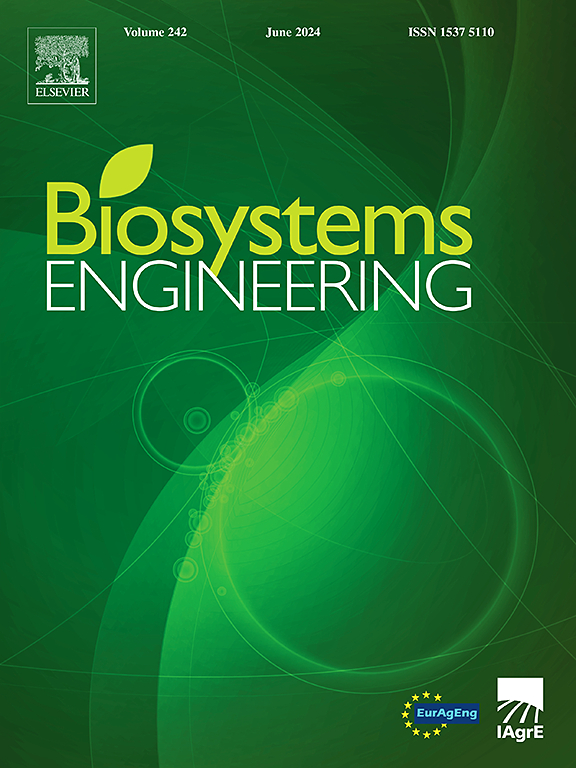再生农业免耕播种机防堵方法研究进展
IF 5.3
1区 农林科学
Q1 AGRICULTURAL ENGINEERING
引用次数: 0
摘要
再生农业(RA)是一种基于自然的解决方案,其核心意图是通过提高土壤有机含量和氮含量,减少化学品投入和机械操作来改善土壤健康,从而实现农业的可持续发展,即增强土壤固碳,最大限度地提高生物多样性,改善水、植被和土地生产力的质量。免耕播种和土地覆盖是农作管理土壤、减少水蚀和风蚀、提高水分入渗特性的两项关键措施。然而,免耕播种机经常被作物残茬阻挡,造成更多的能量投入和更少的作物产量产出。防堵技术是免耕播种技术的重要组成部分,是近年来发展起来的一种防堵技术。综述了典型的开沟器及其工具特性和目前免耕播种防堵方法。介绍了NST防堵方法的五个方面:播种前残留管理、秸秆切割、秸秆清除、提高秸秆流动性等方法(即自动导航和高压空射)。提出了进一步提高免耕播种机抗堵性能以促进免耕播种机和免耕播种机发展的5个研究方向。本研究探讨了通过减少能量投入(即减少燃料消耗)和提高作物产量来提高免耕播种机抗阻塞能力和满足RA原则的意义。本文章由计算机程序翻译,如有差异,请以英文原文为准。
Research progress and development in anti-blocking methods for no-till seeders in regenerative agriculture
Regenerative agriculture (RA) is nature-based solution which has its core intention to improve soil health through elevated soil organic content and nitrogen, as well as reduced chemicals input and mechanical operations, so as to realise the sustainable development of agriculture, namely enhanced soil carbon sequestration, maximised biodiversity and improved quality of water, vegetation and land-productivity. No-till seeding and ground cover are two critical practices of RA in terms of managing soil, reducing water and wind erosion, and enhancing water infiltration characteristics. However, no-till seeders are regularly blocked by crop residue in RA systems, causing more energy inputs and less crop yield outputs. Anti-blocking methods are essential for the no-till seeding technology (NST) and have been developed over the past years. A comprehensive summary about typical furrow openers and corresponding tool characteristics and current anti-blocking methods for no-till seeding are reported. The anti-blocking methods for NST are introduced in five aspects: residue management before seeding, straw cutting, straw removing, improving straw fluidity and other methods (i.e. automatic navigation and high pressure air shooting). This review also recommends five future research directions about further improving the anti-blocking performance of no-till seeders to promote the development of NST and RA. The study discusses implications for improving the anti-blocking ability of no-till seeders and satisfying the principles of the RA by reducing energy inputs (i.e. less fuel consumption) and raising the outputs of crop yields.
求助全文
通过发布文献求助,成功后即可免费获取论文全文。
去求助
来源期刊

Biosystems Engineering
农林科学-农业工程
CiteScore
10.60
自引率
7.80%
发文量
239
审稿时长
53 days
期刊介绍:
Biosystems Engineering publishes research in engineering and the physical sciences that represent advances in understanding or modelling of the performance of biological systems for sustainable developments in land use and the environment, agriculture and amenity, bioproduction processes and the food chain. The subject matter of the journal reflects the wide range and interdisciplinary nature of research in engineering for biological systems.
 求助内容:
求助内容: 应助结果提醒方式:
应助结果提醒方式:


